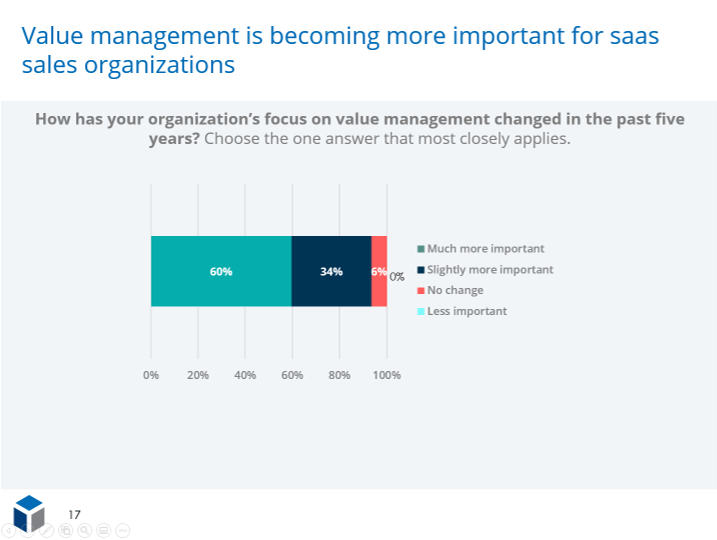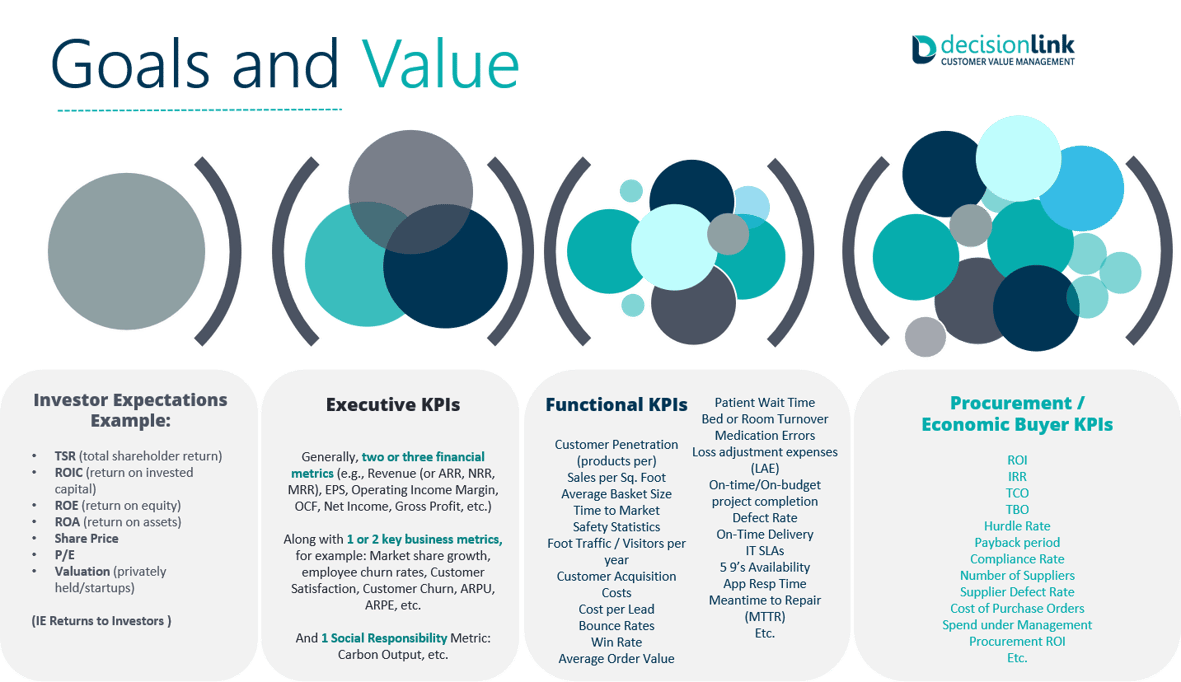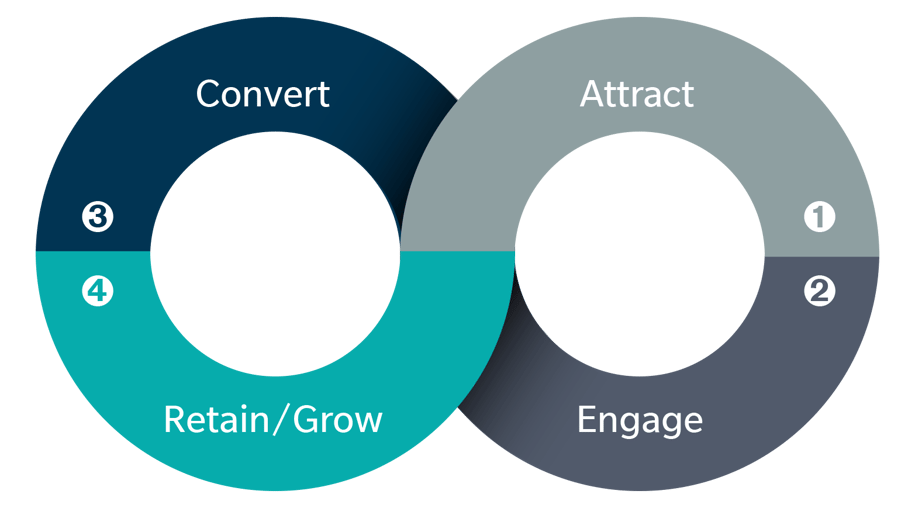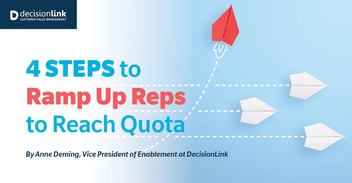Putting all your Eggs in One Basket?

No. Aim your Value Correctly all the way UP the Food Chain!
In 2020, we conducted a study in conjunction with Dimensional Research, of 203 SaaS business leaders (at the height of the pandemic), to learn more about their strategies to combat the headwinds of selling in an entirely different world. We specifically wanted to know if they were thinking about value-based selling, value-based marketing, and value realization impact relative to churn rates and just overall how they were thinking about customer value management. When asked how important customer value management was becoming to their organizations 94% said it has become more important to them over the past five years to varying degrees.

It occurred to me in reviewing these stats, that as CRO’s drive teams to position value and business outcomes with customers, that some sellers may need a hand really discerning what type of value is being generated, and more importantly who cares about what? While there are plenty of value selling methodologies out there, and value selling programs, the objective of this blog is to share my most EGGcelent Value Mapping Cheat Sheet with you to help your salespeople “aim” their value-based conversations the right way. Whether you are a salesperson, a marketer, or even a customer success professional, it’s important to know how to aim your value-based conversations to make the most impact.
Value means different things to different people at different levels within an organization.
At the highest level of an organization economic business outcomes are key and the measure of value creation. Whereas moving down the organization employees tend to get measured on activity levels or functional area metrics. In other words, even within the same company or the same functional area, value takes on a different form and meaning depending on what a person is responsible for. Therefore, don’t expect people to jump up and down if you tell them your product or service can help them generate an ROI of $650,000 per year if their biggest concern is emergency room wait time or mean time to repair. Context is everything here, and it’s really important to analyze your target buyer, how they are measured, and then help them translate the upstream impact their work has on the overall executive level KPI’s i.e., the business objectives of the company.
Your product or service may have a profound effect on EPS or working capital, so it’s important to calculate and translate the benefits you deliver for your target audience all the way up that hierarchy. This way regardless of whom you speak to in an organization, your value translated becomes music to their ears. So, here’s my cheat sheet of what different “eggs” care about from investors all the way through to project or functional leaders, with examples. Understand though in some very small or very flat companies organizationally speaking, executive and functional KPIs are the same. Have a look…

The question now is, how do you calculate and quantify the impact of your solution(s) across multiple levels and stakeholders and make the connection right to the top? And furthermore, how do customer success teams measure this way when trying to determine the post-implementation impact of the solution, especially during renewal time? And how can marketers leverage these KPI’s in their messaging/content to attract even the highest-level influencer or buyer?
Great questions!
To learn the answers and learn more about taking KPIs and benefits at different levels of the organization and translating them into economic value to attract, engage, win and measure customer value realized, please visit us at www.decisionlink.com and we’ll grow from there.

Or if you want to learn about exciting career opportunities at DecisionLink, and making a real impact helping customers establish and communicate the value of their solutions, check out our career pages found here. And we will grow from there!


 ValueCloud
ValueCloud
.png?width=118&height=76&name=Rectangle%20(3).png) ValueCloud Ignite
ValueCloud Ignite
.png?width=92&height=92&name=Rectangle%20(4).png) Free Assessment
Free Assessment
.png?width=100&height=100&name=Rectangle%20(5).png) Watch a Demo
Watch a Demo
.png?width=82&height=96&name=Rectangle%20(6).png) Value Calculator
Value Calculator

.png?width=62&height=51&name=Group%2010%20(1).png) Marketing
Marketing
 Sales
Sales
 Customer Success
Customer Success
 Engage Prospects
Engage Prospects
 Win Deals Faster
Win Deals Faster
 Retain Customers
Retain Customers
.png?width=62&height=62&name=Rectangle%20(8).png) Adopt and Scale
Adopt and Scale
.png?width=54&height=54&name=Rectangle%20(9).png) Cybersecurity
Cybersecurity
 Healthcare
Healthcare
.png?width=54&height=54&name=Rectangle%20(10).png) IT & Software
IT & Software



